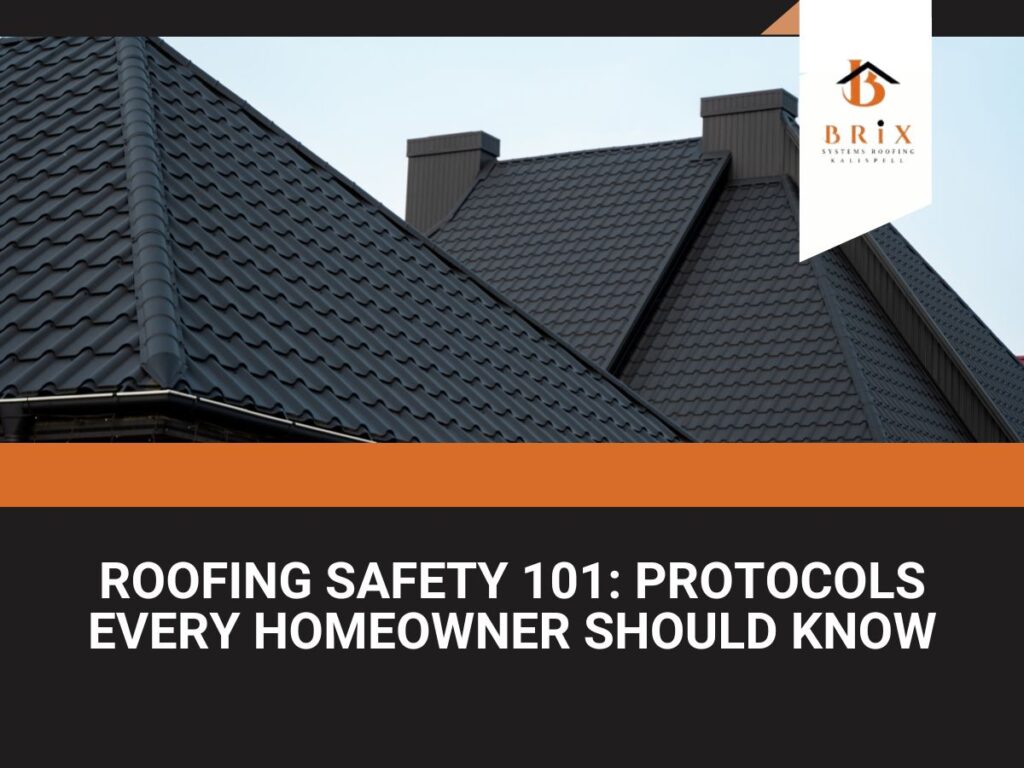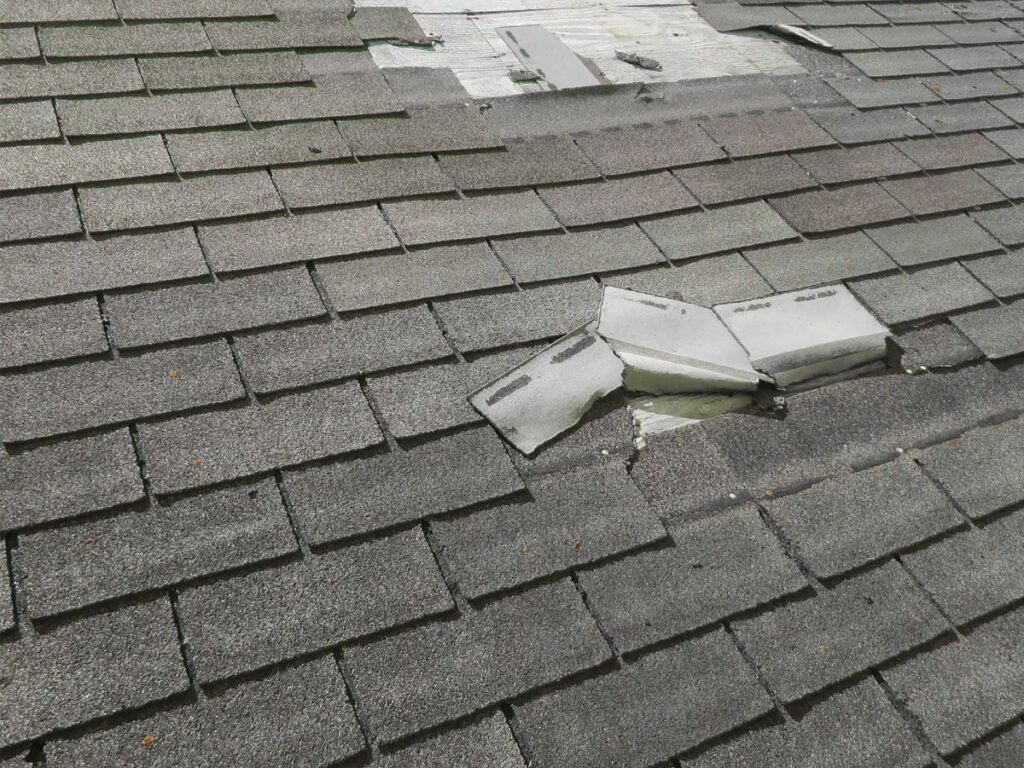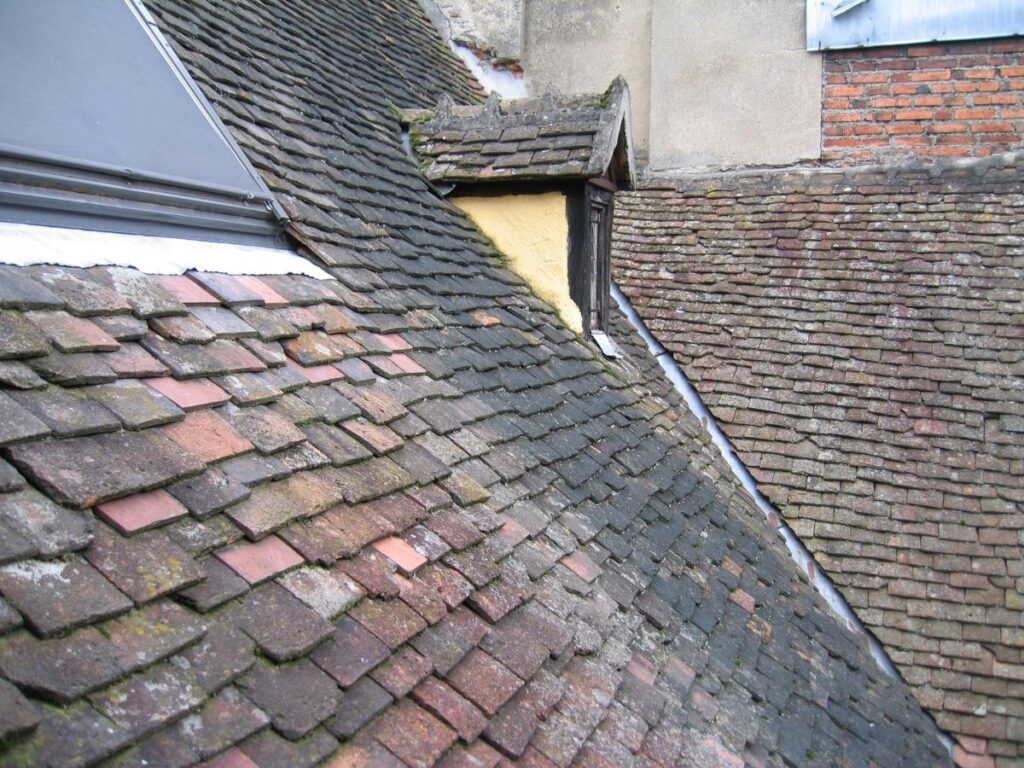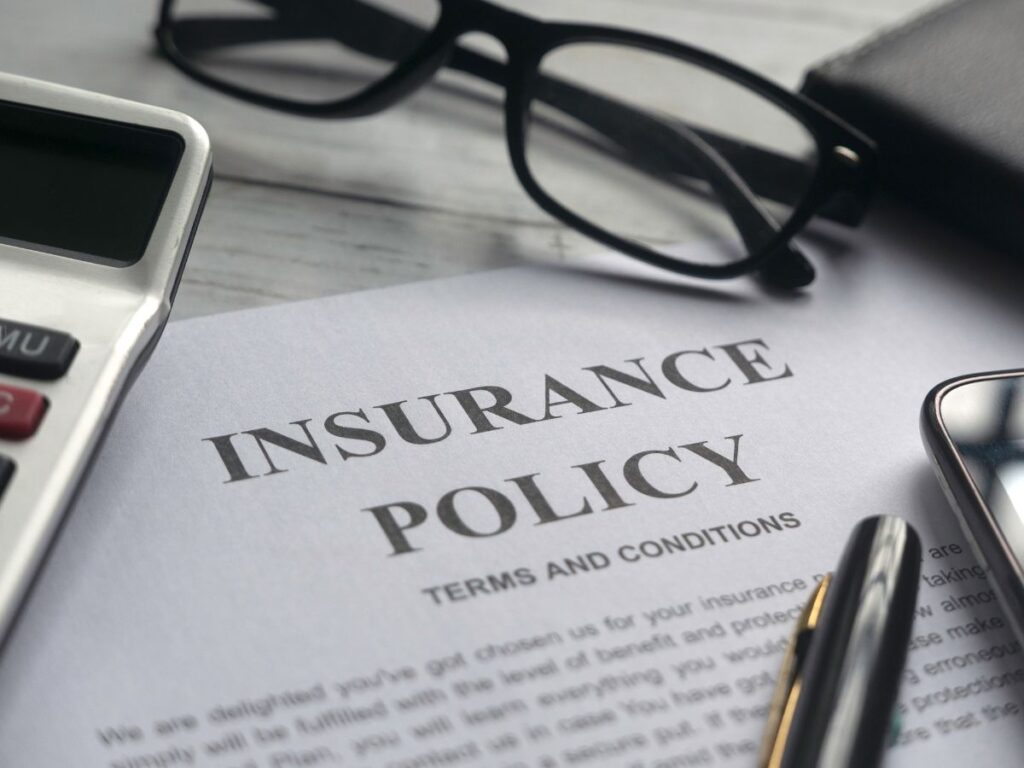
Roofing projects demand meticulous planning and strict adherence to safety protocols to ensure efficiency and personal safety. From assessing project scope and weather conditions to using proper safety gear and practicing safe ladder and roof access, homeowners play a crucial role in establishing a secure work environment.
This article explores essential safety measures, including emergency readiness, recognizing when professional assistance is needed, and ongoing safety education. By implementing these protocols, homeowners protect their property and prioritize the well-being of everyone involved in roofing projects. Let's look at roofing safety 101.
Roofing safety is of utmost importance for several reasons, encompassing both personal well-being and the integrity of the property:
Roofing work involves working at heights and handling heavy materials and tools. Accidents such as falls, slips, and trips can lead to serious injuries or even fatalities. Adhering to safety protocols significantly reduces these risks, ensuring the well-being of everyone involved in the project.
Following safety regulations and guidelines, such as those provided by organizations like OSHA (Occupational Safety and Health Administration), is not just advisable but often mandatory. Non-compliance can lead to legal repercussions, fines, or even project shutdowns.
Investing in safety measures upfront can save money in the long run. Preventing accidents reduces medical costs, potential legal fees, and expenses related to project delays or rework caused by injuries or damage.
A safe working environment fosters productivity. When workers feel secure and confident in their safety, they can focus more effectively on their tasks without distractions or concerns about potential hazards.
Safe practices not only safeguard individuals but also protect the property itself. Mishandling tools or materials, or neglecting safety measures, can lead to damage to the roof structure, which may necessitate costly repairs or replacements.
For roofing contractors and companies, prioritizing safety enhances their reputation. Clients are more likely to trust and hire professionals who demonstrate a commitment to safety, knowing that their property and the project are in capable and responsible hands.
Emphasizing safety fosters a positive safety culture within the organization or among homeowners. It encourages continuous improvement, training, and awareness about potential hazards and their mitigation.
Safe practices often overlap with environmentally friendly practices. Proper disposal of materials, minimizing waste, and using eco-friendly products contribute to sustainability efforts while ensuring safety on the job site.
Roofing safety is not merely a regulatory requirement but a moral obligation to protect lives, property, and the overall well-being of those involved in roofing projects. By prioritizing safety through adherence to protocols and guidelines, homeowners, contractors, and workers can achieve successful project outcomes while minimizing risks and ensuring a secure working environment.
Ensuring safety during roofing work is critical for homeowners. Here are the essential safety protocols every homeowner should be familiar with:
Before beginning any roofing work, assess the scope of the project to understand whether it involves repairs, maintenance, or a full replacement. Check weather forecasts and avoid working during adverse conditions like rain, high winds, or extreme heat. Ensure compliance with local building codes and obtain any necessary permits.
Always wear appropriate personal protective equipment (PPE), including a hard hat to protect against head injuries from falling objects, a safety harness with a fall arrest system when working at heights, non-slip footwear for stability, and gloves and safety glasses for hand and eye protection.
Select a ladder suitable for your weight and the task requirements. Place ladders on stable, level ground and secure them properly. Maintain three points of contact (two hands and one foot or two feet and one hand) while climbing.
Use stable access points such as sturdy ladders or roof hatches. Avoid walking on fragile or unsupported areas of the roof. Secure tools and materials using tool belts or harnesses to prevent them from falling.
Inspect tools and equipment before use to ensure they are in good condition. Follow manufacturer instructions and safety guidelines for their operation. Store materials securely to prevent them from sliding off the roof.
Keep a fully stocked first aid kit on-site and know how to use it. Maintain a list of emergency contacts, including local emergency services and the nearest hospital. Establish and communicate an evacuation plan in case of emergencies, ensuring everyone knows the safe exit routes.
Maintain clear communication with anyone assisting or working on the roof, using hand signals or radios if necessary. Work with a partner whenever possible to assist in emergencies or accidents.
Keep pets and children away from the work area to prevent accidents. Clear the roof and surrounding areas of obstacles or debris to create a safe working environment.
Stay informed about the latest safety guidelines and best practices in roofing through regular training sessions or workshops. If hiring professionals, ensure they are licensed, insured, and have a good safety record.
By following these essential safety protocols, homeowners can minimize risks during roofing projects, ensuring a safe and successful outcome while prioritizing the well-being of everyone involved.
Knowing when to call a professional for roofing issues is crucial to maintaining safety and ensuring the integrity of your home. Here are situations where it's advisable to seek the expertise of a professional roofer:
If you notice significant leaks that are causing water damage inside your home, it's essential to call a professional immediately. They can assess the extent of the damage and recommend the necessary repairs to prevent further issues.

Following severe weather such as hailstorms or strong winds, inspect your roof for damage. If you spot missing shingles, dents, or other signs of damage, a professional can conduct a thorough inspection and perform repairs to restore your roof's integrity.

As roofs age, they become more susceptible to wear and tear. If your roof is nearing the end of its expected lifespan (typically 20-30 years for asphalt shingles), a professional inspection can identify any underlying issues and recommend whether repairs or replacement are necessary.

A sagging roof could indicate structural issues or excessive weight, such as from accumulated snow or water. This is a serious concern that requires immediate attention from a professional roofer to assess the cause and determine the appropriate corrective measures.
If you've experienced recurring issues such as persistent leaks, mold growth, or insulation problems, it's best to consult with a professional. They can identify the root cause of these issues and provide lasting solutions to prevent them from reoccurring.
If a DIY roofing repair or installation project didn't go as planned or resulted in further damage, it's wise to seek professional help. Professionals have the expertise and tools to correct mistakes safely and effectively.
Roofing work inherently involves working at heights and handling potentially dangerous tools and materials. If you're not comfortable or experienced with these aspects, calling a professional ensures the work is done safely and reduces the risk of accidents or injuries.
In some cases, insurance policies may require repairs or inspections to be performed by licensed professionals. Consulting with a professional roofer ensures that any work done meets these requirements and maintains coverage.
Ultimately, calling a professional roofer ensures that roofing issues are addressed correctly, safely, and efficiently. They have the expertise, equipment, and experience to handle a wide range of roofing problems, protecting both your home and your investment in its maintenance.

Here are some additional safety tips to consider when working on or around your roof:
Use sufficient lighting during early mornings or late evenings to illuminate your work area, reducing the risk of tripping or missteps.
Exercise caution around power lines and electrical equipment near or on the roof. Avoid contact with overhead wires and ensure all tools and equipment are properly grounded according to safety standards.
Take precautions when using equipment that generates heat or sparks, such as torches or hot air guns. Keep fire extinguishers nearby and adhere to fire safety protocols to prevent accidental fires.
If using adhesives, coatings, or other materials emitting fumes, work in well-ventilated areas or use respirators to protect against inhaling harmful vapors.
Be mindful of hazardous materials like asbestos or lead-based paints, especially in older buildings. Consult professionals trained in safe handling and removal if hazardous materials are suspected.
Tie back long hair and avoid wearing loose clothing or accessories that could get caught in tools or machinery, reducing the risk of accidents from entanglement.
Be aware of weight restrictions on your roof and avoid placing excessive weight in concentrated areas to prevent structural damage or collapses.
Place non-skid mats or padding on the roof surface to improve traction, especially on steep or sloped roofs, reducing the risk of slipping.
After completing roofing tasks, thoroughly clean the work area to remove debris, tools, and equipment. This minimizes tripping hazards and maintains a safe environment for future maintenance or inspections.
Incorporating these additional safety protocols into your roofing practices helps minimize risks, promotes a safer work environment, and contributes to successful project outcomes and personal safety.
In conclusion, prioritizing safety in roofing projects is crucial for homeowners to achieve successful outcomes while ensuring personal well-being. By meticulously planning, assessing weather conditions, using proper safety equipment, and practicing safe procedures for ladder and roof access, homeowners establish a secure work environment.
The article underscores essential safety measures such as emergency readiness, recognizing when professional assistance is necessary, and ongoing safety education. Implementing these protocols not only protects property but also promotes a safe environment for all involved in roofing projects.